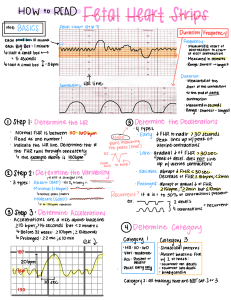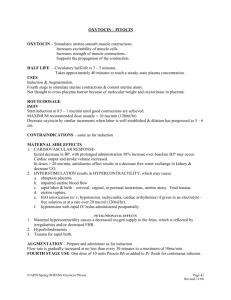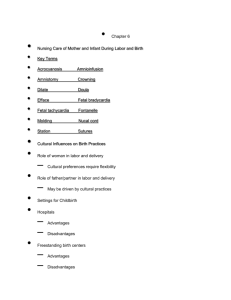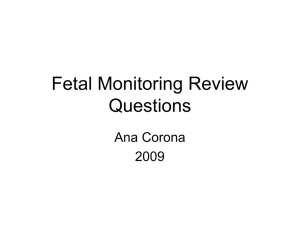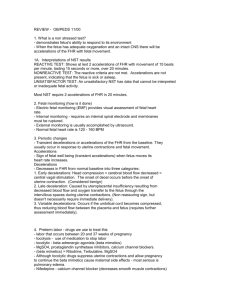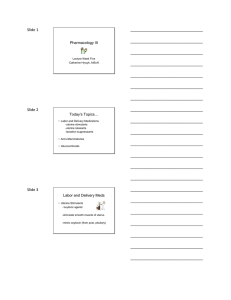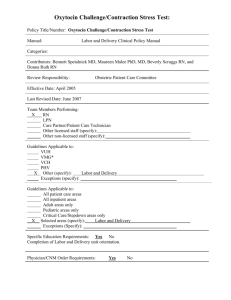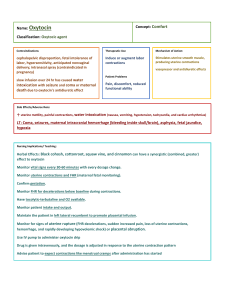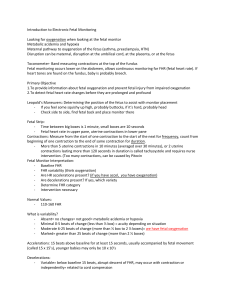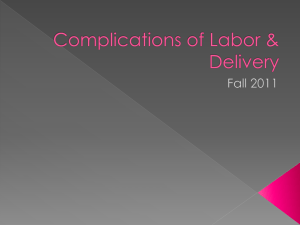Policy: L-73
advertisement
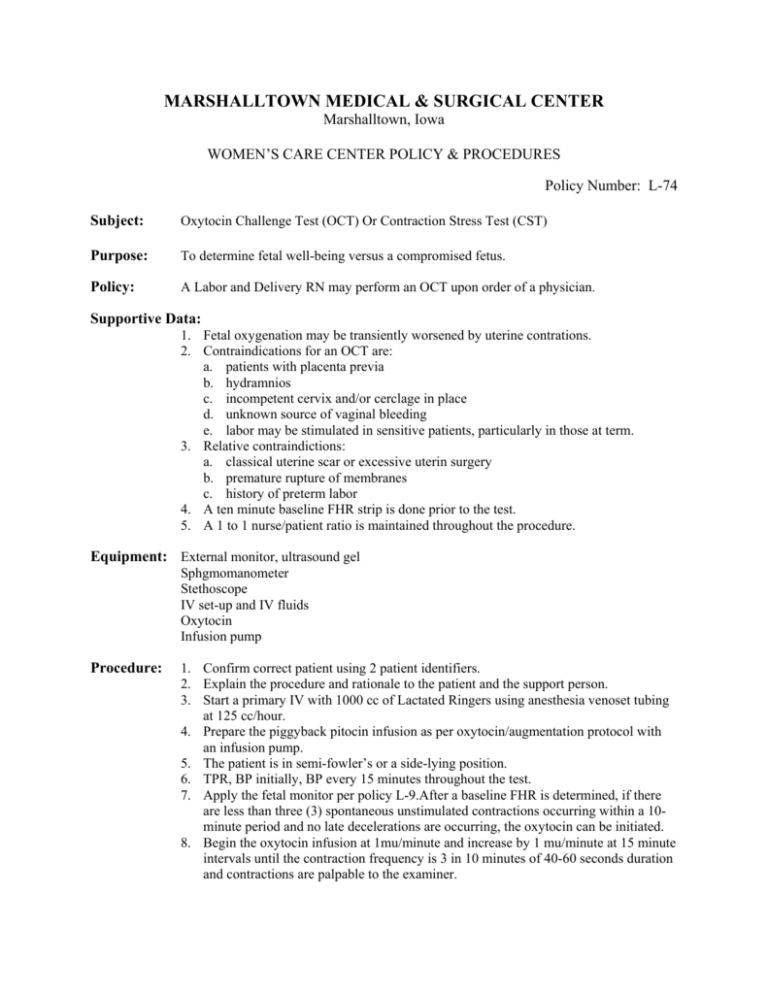
MARSHALLTOWN MEDICAL & SURGICAL CENTER Marshalltown, Iowa WOMEN’S CARE CENTER POLICY & PROCEDURES Policy Number: L-74 Subject: Oxytocin Challenge Test (OCT) Or Contraction Stress Test (CST) Purpose: To determine fetal well-being versus a compromised fetus. Policy: A Labor and Delivery RN may perform an OCT upon order of a physician. Supportive Data: 1. Fetal oxygenation may be transiently worsened by uterine contrations. 2. Contraindications for an OCT are: a. patients with placenta previa b. hydramnios c. incompetent cervix and/or cerclage in place d. unknown source of vaginal bleeding e. labor may be stimulated in sensitive patients, particularly in those at term. 3. Relative contraindictions: a. classical uterine scar or excessive uterin surgery b. premature rupture of membranes c. history of preterm labor 4. A ten minute baseline FHR strip is done prior to the test. 5. A 1 to 1 nurse/patient ratio is maintained throughout the procedure. Equipment: External monitor, ultrasound gel Sphgmomanometer Stethoscope IV set-up and IV fluids Oxytocin Infusion pump Procedure: 1. Confirm correct patient using 2 patient identifiers. 2. Explain the procedure and rationale to the patient and the support person. 3. Start a primary IV with 1000 cc of Lactated Ringers using anesthesia venoset tubing at 125 cc/hour. 4. Prepare the piggyback pitocin infusion as per oxytocin/augmentation protocol with an infusion pump. 5. The patient is in semi-fowler’s or a side-lying position. 6. TPR, BP initially, BP every 15 minutes throughout the test. 7. Apply the fetal monitor per policy L-9.After a baseline FHR is determined, if there are less than three (3) spontaneous unstimulated contractions occurring within a 10minute period and no late decelerations are occurring, the oxytocin can be initiated. 8. Begin the oxytocin infusion at 1mu/minute and increase by 1 mu/minute at 15 minute intervals until the contraction frequency is 3 in 10 minutes of 40-60 seconds duration and contractions are palpable to the examiner. Oxytocin Challenge Test (OCT) or Contraction Stress Test (CST), Page 2 9. Discontinue the oxytocin when three (3) contractions have occurred within a 10 minute period of interpretable data, hyperstimulation, positive or negative test results, variable decelerations or spontaneous repture of membranes occurs. 10. Continue to monitor until uterine activity and FHR return to baseline status. Assessment: 1. Negative test: three (3) uterine contractions is a 10-minute period without late decelerations; there is usually average variability and acceleration of FHR with fetal movement. 2. Positive test: persistent late decelerations or late decelerations with more than half of the contractions. Variability may be minimal or absent. 3. Equivocal/Suspicious test: Where late decelerations occur with less than half of the contractions. 4. HyperstimulationPresence of contractions more frequent than every 2 minutes or lasting longer than 90 seconds. 5. Uninterpretable: Due to poor recording and/or late decels with hyperstimulation and cannot be used for clinical management. Intervention: Implement corrective action for non-reassuring FHR and hyperstimulation as outlined in Fetal Monitoring Policy L-9. Report To Doctor: Report all test results to doctor when test ended. Report any abnormal FHR findings immediately. Documentation: OBIX Originated by: Women’s Care Center Effective date: 8/92 Authorized by: UBC of WCC 1/07 ____________________________________________ Chair of OB/GYN Date Authorized by: ____________________________________________ COO/CNO Date Revision date: 6/05, 1/07 Review date: 98 Distribution: WCC References: Prenatal Continuing Education, 1999, Book I, Maternal and Fetal Evaluation Unit 3, pages 8-10 Medical Consultants Network Inc., Labor and Delivery Manual, 1998, pages 41-42. ACOG Technical Bulletin #9, Oct. 1999. T:\Data\Policies\WOMENS\wccL-74r2new.doc

